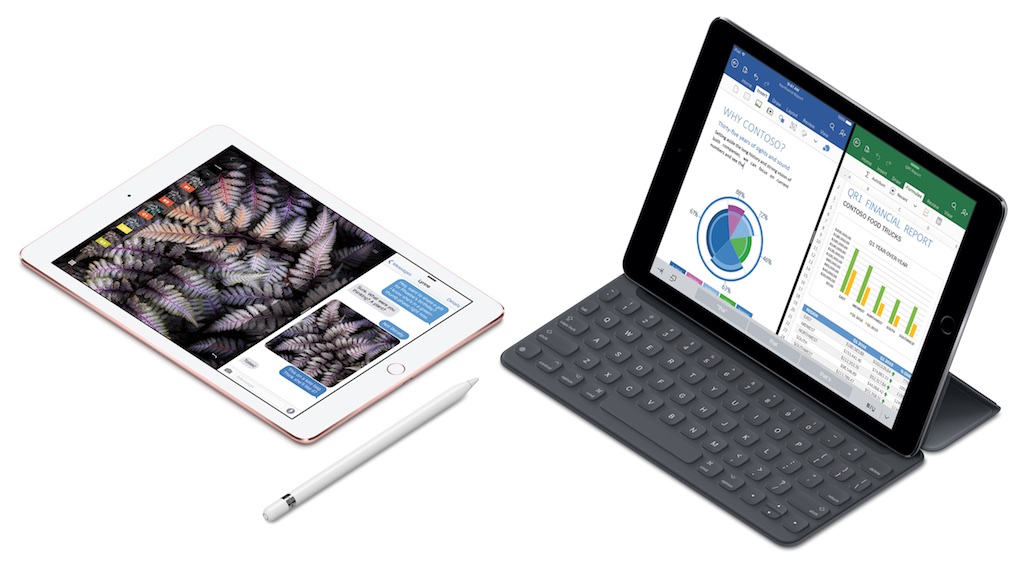Cassandra: Upcoming Events, Reliability of Analysts and a Simple Request for iOS

AMITIAE - Monday 25 April 2016
|
Cassandra: Upcoming Events, Reliability of Analysts and a Simple Request for iOS |
 |
|
|
By Graham K. Rogers
I will follow the Keynote presentation when outlines are announced on 13 June at the Bill Graham Auditorium and think about how the new versions will affect me. I also expect to run beta versions of OS X and perhaps iOS. I don't want much, but there are a few enhancements I would like to consider, particularly with iOS.
New features introduced to iOS that integrate with software on Macs would also need to be added to OS X, which some suggest could be re-purposed as MacOS (iOS, WatchOS, tvOS). OS X has been more or less stable, from the user viewpoint for a while and does not really need drastic change: evolution, not revolution.

iPad Pro models - Image Courtesy of Apple
Some of the changes in iOS are as a detect result of hardware developments: screens, processors, camera technology, fingerprint ID technology; while there is also a need for security. Apple is perceived as victor in its dispute with the authorities over access to certain iPhones, but there is little doubt that the FBI and other agencies will be making renewed efforts in their (perhaps mistaken) belief that there should be no barrier to their access. If the same schedules are kept, we would expect to see the A10 processor in the next version of the iPhone which, despite the reverence accorded Ming-Chi Kuo of KGI securities and his prediction that nothing new will be in the iPhone 7, could have a number of enhancements and new features, thus proving the analyst wrong again. Both Chris Rawson (Engadget) and Philip Elmer-deWitt (Apple 3.0) note that the record of this analyst is not as good as some would like to believe. Tossing a coin might produce results just as good. Elmer DeWitt suggests 44% while Chris Rawson writes, "approximately half of Kuo's predictions ultimately turn out to be either partially or substantially incorrect" regarding predictions in 2013. Many commentators use the adjective "reliable" when describing this analyst, because they all do. There is insufficient statistical support for this. Pronouncements from those like Trip Chowdhury and Michael Blair are (rightly) dismissed, so why is the dubious track record of the man from KGI securities accepted? The same easy pass has occurred in the past when some have quoted DigiTimes (JP Morgan called their predictions, "random"). That did not stop half of Wall Street following Katy Huberty down the iPhone sales rabbit hole, just before the last quarterly results from Apple, when it was found that sales were not falling at all. It is just a coincidence, of course, that these negatives often appear just before Apple announces its results. Even Tim Cook has acknowledged that this quarter that iPhone sales will be lower. Apple's own guidance already allows for this.
That is, as far as I am concerned, with one exception: white balance. This is available on the Mac (both in Photos and Aperture), but is not included in Photos for iOS: an omission in my opinion, despite 3rd party apps specifically for White Balance. None of them works as well as they might and this is a feature that needs to be available within Photos: the app intended for most editing and handling of images.
Graham K. Rogers teaches at the Faculty of Engineering, Mahidol University in Thailand. He wrote in the Bangkok Post, Database supplement on IT subjects. For the last seven years of Database he wrote a column on Apple and Macs. He is now continuing that in the Bangkok Post supplement, Life. |
|

For further information, e-mail to
Back to
eXtensions
Back to
Home Page